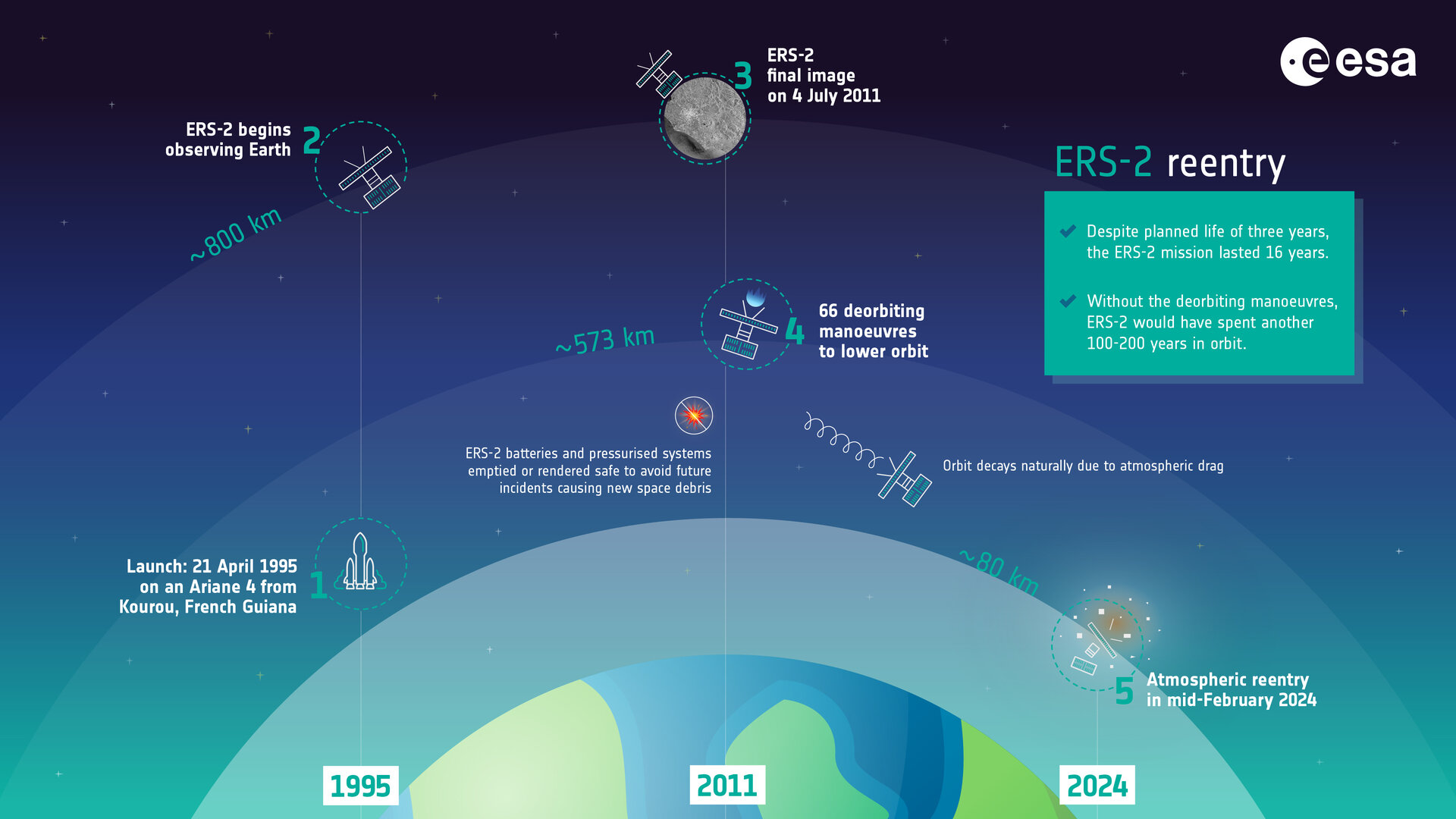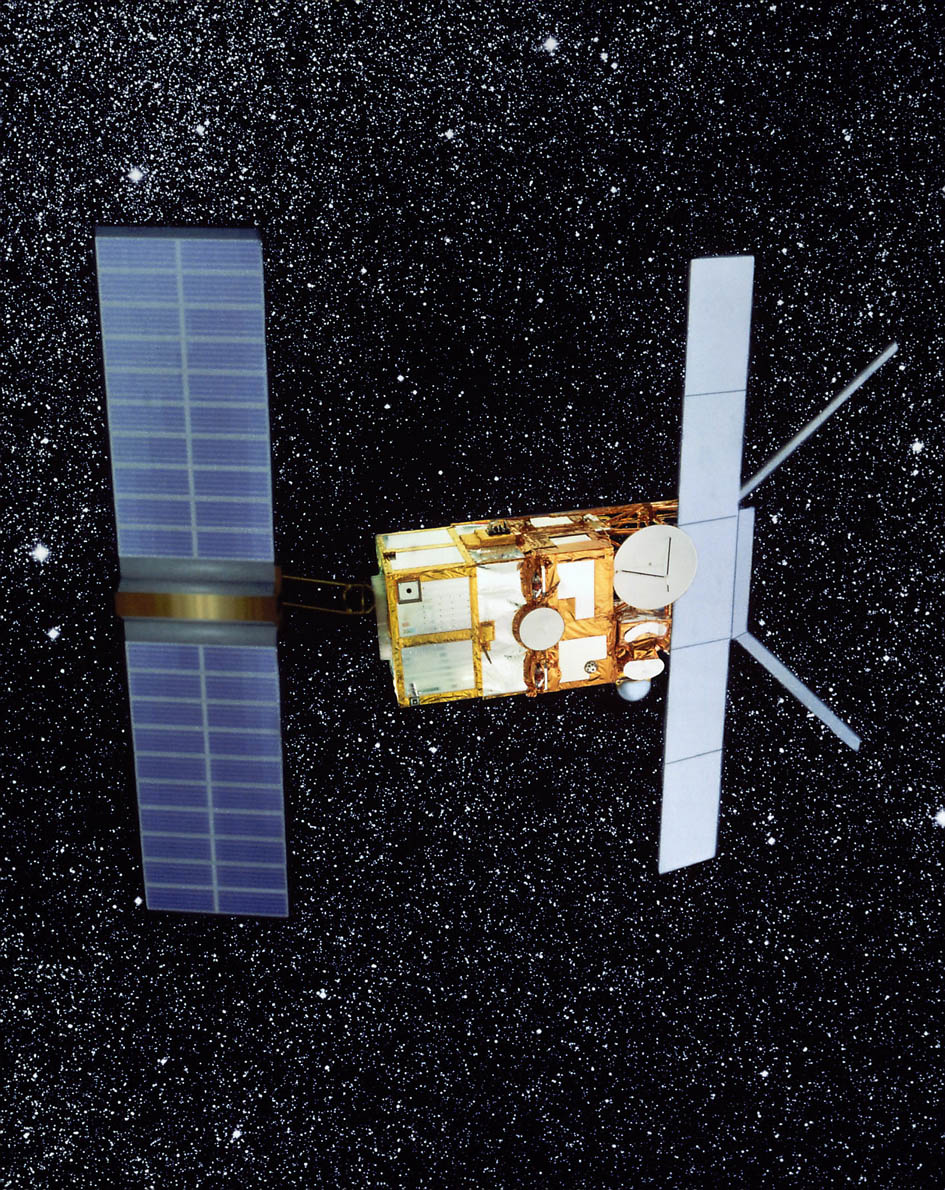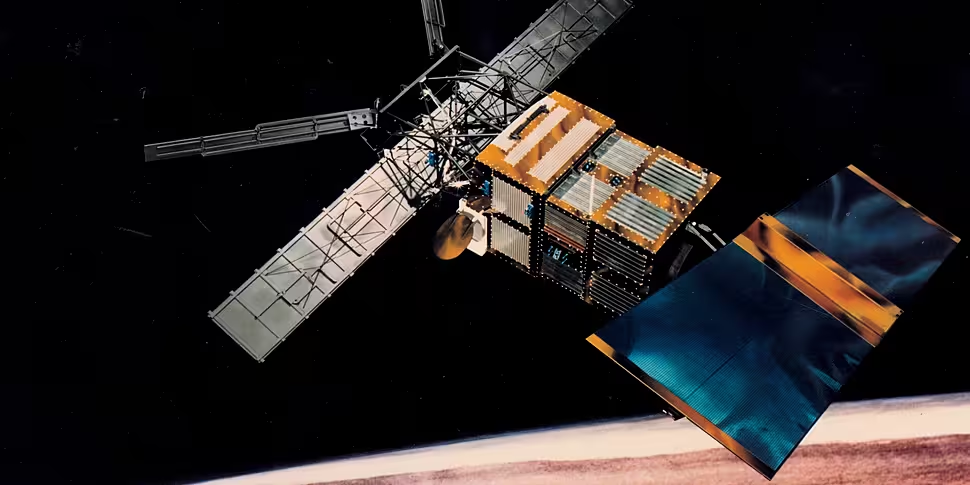An uncontrolled satellite is set to tumble towards Earth tomorrow, almost 30 years after it was launched.
The ERS-2 took off from French Guiana in 1995 and its mission came to an end in 2011.
The satellite is expected to break up into pieces on re-entry, the majority of which will burn up.
It carried a comprehensive payload including a Synthetic Aperture Radar (SAR) and a radar altimeter for studying sea surface temperatures and winds.
The ERS-2 also has a sensor for atmospheric ozone research.
As the re-entry is "natural" - in other words, not controlled by humans - it is impossible to predict exactly when and where it will happen, according to the European Space Agency (ESA).
 A graph detailing ERS-2's re-entry. Image: ESA
A graph detailing ERS-2's re-entry. Image: ESA"The only force causing ERS-2’s orbit to decay is atmospheric drag, which is influenced by unpredictable solar activity," the agency said.
But as the time draws closer, the agency is able to say with greater accuracy what will happen.
Its latest forecast suggests the satellite will re-enter the Earth's atmosphere at 7.24pm (Irish time) on Wednesday.
There is a window of uncertainty due to the unpredictable solar activity, which means the re-entry could take place up to nine hours before or after the predicted time.
 An artist's conception of the ERS-2 satellite. Image: ESA
An artist's conception of the ERS-2 satellite. Image: ESAThe ERS-2 was completely 'passivated' back in September 2011 - meaning its batteries and pressurised systems were emptied or rendered safe.
Its mission has also been listed as 'Complete' by the ESA.
"During re-entry, the satellite will break up into pieces, the majority of which will burn up. The risks associated with satellite re-entries are very low," the ESA said.
The satellite will break up into fragments around 80km above Earth’s surface with the vast majority of these burning up in the atmosphere.
Some fragments could reach Earth's surface where they will most likely fall into the ocean.
The ESA's Space Debris Office is monitoring the satellite's orbit decay in close coordination with several international partners.









